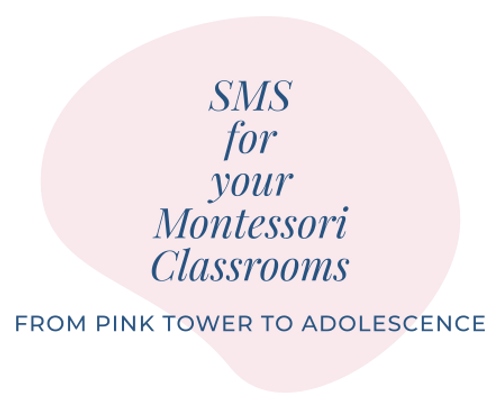Planning for Independence: The Power of Checklists in Secondary Montessori Education
- Anne Slamkowski
- Jun 9
- 4 min read

In Montessori Secondary classrooms, we often speak of preparing the environment and trusting the adolescent. But one of the most essential tools we can offer adolescents is deceptively simple: a work checklist or planner.
These tools don’t just help students organize their week—they build executive functioning, increase student agency, and support adolescents in learning how to balance academic demands with real life. As Dr. Montessori wrote, “The essential reform is this: to put the adolescent on the road to achieving economic independence… [through] a school of experience in the elements of social life” (Montessori, 1973, p. 67). That experience includes responsibility, planning, and self-direction—skills that checklists support directly.
1. Knowing What Work Lies Ahead: Reducing Anxiety Through Structure
Adolescents are in a transitional phase between dependence and full autonomy. Having a clear, predictable outline of expectations reduces ambiguity and creates psychological safety—something the adolescent brain craves. Neuroscientific research indicates that predictability and routines can reduce stress by providing the brain with a sense of control (Siegel, 2013).
In this context, a checklist is not about micromanagement. It’s about making learning visible so that adolescents can take ownership of their week.
2. Determining How to Get the Work Done: Building Executive Function
Executive functioning skills—like planning, time management, prioritizing, and task initiation—don’t magically appear in adolescence. They are developed through intentional practice (Zelazo & Carlson, 2012).
Montessori environments offer freedom within limits, but that freedom must be scaffolded. Tools like planners and weekly work checklists help adolescents:
Break large assignments into manageable parts
Give clarity on due dates for each part of assignment
Set short- and long-term goals
Track their progress with frequent check-ins
Learn how to adjust when plans go awry
These are foundational habits for lifelong learning, aligning with research-based strategies for enhancing metacognition and self-regulated learning (Zimmerman, 2002).
3. Balancing Academics with Life: A Skill for the Real World
Modern adolescents are balancing a multitude of responsibilities: academics, extracurricular activities, social relationships, family obligations, and, increasingly, jobs or caregiving roles. The cognitive load is real.
A simple checklist helps reduce decision fatigue and supports a work-life balance by encouraging students to plan their week proactively. It invites them to ask:
What’s due when?
What can I realistically complete today?
When do I need rest, solo time, or community connection?
These questions cultivate not just academic success, but emotional intelligence and life readiness.
4. Designing Adolescent-Friendly Checklists: A Guide for Teachers
Teachers designing checklists for Montessori Secondary environments should start with these key principles:
🔹 Be Transparent: Students should know what’s expected for the week—academically and socially (e.g., seminar prep, fieldwork, community responsibilities).
🔹 Be Consistent: Deliver checklists on the same day each week (Monday or Friday), so students can anticipate and begin planning.
🔹 Allow for Choice: Build flexibility into the checklist. Use categories like “Must Do” and “Can Do” to support prioritization and autonomy.
🔹 Support Reflection: Include a space at the bottom for weekly goals, self-assessment, or journaling prompts.
🔹 Use Visual Tools: Some students benefit from icons, time blocks, or color coding to differentiate task types.
🔹 Make It Collaborative: Before implementing a checklist format, ask students what has worked for them in the past, what they need, and what helps them feel organized.
5. What If Students Push Back? Respecting Resistance and Building Buy-In
Not every adolescent will embrace a checklist or planner right away. That’s okay—and expected. Resistance is often a sign of emerging autonomy or past frustration.
Rather than forcing a “one-size-fits-all” system, use resistance as a conversation starter:
🗣️ “What part of this format isn’t working for you?”
🗣️ “Do you want to try building your own version?”
🗣️ “Would a digital planner or an app help instead?”
🗣️ “Can we try this for two weeks, then meet to reflect?”
When adolescents are invited into the design of their tools, they’re far more likely to use them. This practice aligns with Montessori’s view of the guide as a co-partner in development, not a dictator of structure.
6. Supporting All Learners: Checklists as a Differentiation Tool
Montessori classrooms are inherently mixed-age and student-centered, making differentiation a natural part of the design. But in reality, some students need more external structure than others to thrive.
Research in differentiated instruction shows that when expectations are clearly stated and scaffolded, all students—not just those with IEPs or 504 plans—benefit (Tomlinson, 2014). Checklists and planners allow for individual pacing, goal-setting, and reflection, helping each student manage their time and energy in a way that works for them.
They also align with Universal Design for Learning (UDL) principles, which advocate for multiple means of engagement and self-monitoring (CAST, 2018).
7. Cultivating Agency and Responsibility
Ultimately, the goal of Montessori education is not just academic achievement, but whole-child development—helping adolescents become independent and purposeful members of society.
By using checklists and planners:
Students feel trusted to manage their own learning
They gain insight into their strengths and struggles
They practice the adult skill of balancing freedom and responsibility
And that’s what Dr. Montessori envisioned: adolescents who are not just preparing for life, but living it with awareness and agency.
References
CAST. (2018). Universal Design for Learning Guidelines version 2.2. https://udlguidelines.cast.org
Montessori, M. (1973). From childhood to adolescence (A. M. Joosten, Trans.). Schocken Books. (Original work published 1948)
Siegel, D. J. (2013). Brainstorm: The power and purpose of the teenage brain. TarcherPerigee.
Tomlinson, C. A. (2014). The differentiated classroom: Responding to the needs of all learners (2nd ed.). ASCD.
Zelazo, P. D., & Carlson, S. M. (2012). Hot and cool executive function in childhood and adolescence: Development and plasticity. Child Development Perspectives, 6(4), 354–360.
Zimmerman, B. J. (2002). Becoming a self-regulated learner: An overview. Theory into Practice, 41(2), 64–70.




Comments